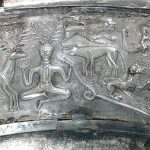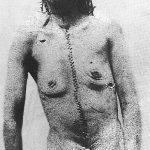
My last several blog posts have dealt with enclosure, so I wanted to continue my research into English land policy. This week, I investigated beyond the Tudor dynasty and hope to synthesize information about medieval land planning. My research leads…

After last week’s blog post on enclosure, I felt the need to go back further in time to understand the importance of enclosure in English land policy. I previously mentioned that enclosure first became prevalent during the Tudor dynasty, but…
As we move into using more secondary as well as primary sources, I want to help out a bit with finding good secondary sources. When historians use the term “scholarly article”, they usually mean something published in a peer-reviewed journal….

After Queen Boudica sacked Londinium in 61 AD, it was rebuilt as a Roman-planned town to consolidate control over the region. Queen Boudica’s vicious sack of Londinium revealed how poorly planned the port city originally was. Queen Boudica was married…

Artist: Unknown Title: Marble statue of a woman, suspected to be Themis Date: 2nd half of the 4th Century BC, Late Classical Link: http://www.metmuseum.org/toah/works-of-art/03.12.17/ Comment: With the onset of concepts like epicureanism and individualism we see a “release” or freeing…

The European Iron Age is a sub-period that marks the transition from prehistoric time to historic time. Ironwork is believed to have been introduced to Europe from Caucasian settlers during the late 11th century B.C. This is important to note,…

The “enclosure movement” in the 19th century encouraged a large demographic migration of people from the English countryside to city centers, speeding up urbanization. Enclosure is the process of converting land from public ownership to private ownership through capital acquisition….
Based on archaeological evidence the Neolithic peoples can, in a variety of ways, be considered enlightened thinkers. Construction of the Thinker of Cernavoda (unknown artist, around 5,000 BC, http://www.visual-arts-cork.com/sculpture/thinker-of-cernavoda.htm) itself took some knowledge and understanding of materials, tools and dimension…

“Jack the Ripper” is the nickname attributed to the 1888 serial killer who was briefly active in Whitechapel, London. The murderer was never caught, and their identity is still disputed; in fact, there remains a lot of mystery about the…
Hi! I have changed the theme yet again – haven’t been happy with any yet. Let me know what you think? OK, for Week 1 we have an introductory post, and one other about what topic(s) you’re interested in exploring.
Recent Comments